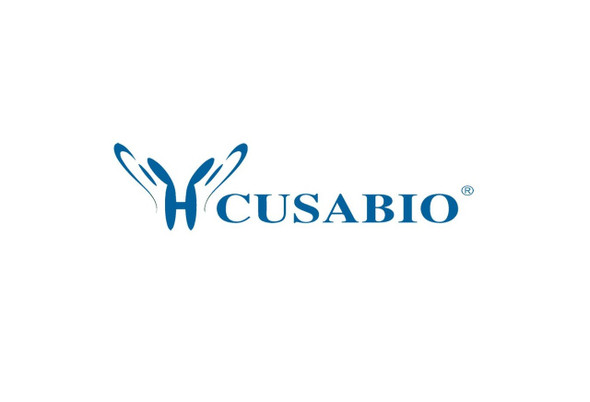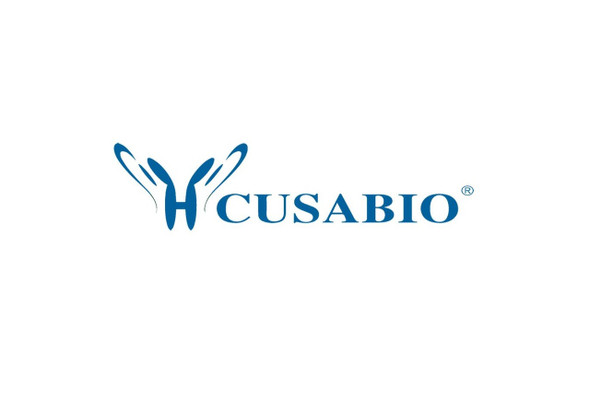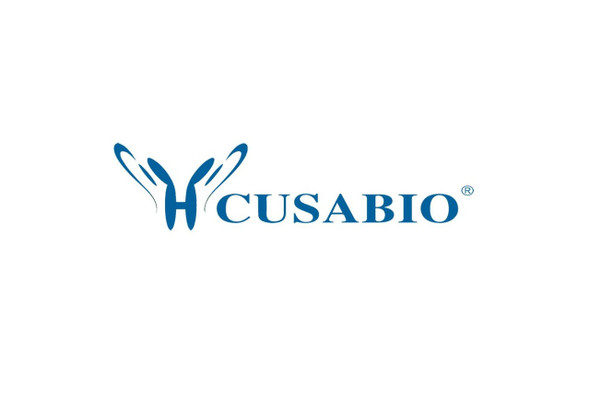Cusabio Virus & Bacteria Recombinants
Recombinant Human papillomavirus type 18 Minor capsid protein L2 (L2) | CSB-EP356939HMN
- SKU:
- CSB-EP356939HMN
- Availability:
- 13 - 23 Working Days
Description
Recombinant Human papillomavirus type 18 Minor capsid protein L2 (L2) | CSB-EP356939HMN | Cusabio
Alternative Name(s): L2; Minor capsid protein L2
Gene Names: L2
Research Areas: Others
Organism: Human papillomavirus type 18
AA Sequence: MVSHRAARRKRASVTDLYKTCKQSGTCPPDVVPKVEGTTLADKILQWSSLGIFLGGLGIGTGSGTGGRTGYIPLGGRSNTVVDVGPTRPPVVIEPVGPTDPSIVTLIEDSSVVTSGAPRPTFTGTSGFDITSAGTTTPAVLDITPSSTSVSISTTNFTNPAFSDPSIIEVPQTGEVAGNVFVGTPTSGTHGYEEIPLQTFASSGTGEEPISSTPLPTVRRVAGPRLYSRAYQQVSVANPEFLTRPSSLITYDNPAFEPVDTTLTFDPRSDVPDSDFMDIIRLHRPALTSRRGTVRFSRLGQRATMFTRSGTQIGARVHFYHDISPIAPSPEYIELQPLVSATEDNDLFDIYADDMDPAVPVPSRSTTSFAFFKYSPTISSASSYSNVTVPLTSSWDVPVYTGPDITLPSTTSVWPIVSPTAPASTQYIGIHGTHYYLWPLYYFIPKKRKRVPYFFADGFVAA
Source: E.coli
Tag Info: N-terminal 6xHis-SUMO-tagged
Expression Region: 1-462aa
Sequence Info: Full Length
MW: 65.6 kDa
Purity: Greater than 90% as determined by SDS-PAGE.
Relevance: Minor protein of the capsid that localizes along the inner surface of the virion, within the central cavities beneath the L1 pentamers. Plays a role in capsid stabilization through interaction with the major capsid protein L1. Once the virion enters the host cell, escorts the genomic DNA into the nucleus, in particular by promoting virion endosomal escape. It is involved, through its interaction with host dynein, in the intracellular microtubule-dependent transport of viral capsid toward the nucleus. Mediates the viral genome import into the nucleus through binding to host importins. Mediates the viral genome import into the nucleus through binding to host importins. Once within the nucleus, L2 localizes viral genomes to PML bodies in order to activate early gene expression for establishment of infection. Later on, promotes late gene expression by interacting with the viral E2 protein and by inhibiting its transcriptional activation functions. During virion assbly, encapsidates the genome by direct interaction with the viral DNA .
Reference: Nucleotide sequence and comparative analysis of the human papillomavirus type 18 genome. Phylogeny of papillomaviruses and repeated structure of the E6 and E7 gene products.Cole S.T., Danos O.J. Mol. Biol. 193:599-608(1987)
Storage: The shelf life is related to many factors, storage state, buffer ingredients, storage temperature and the stability of the protein itself. Generally, the shelf life of liquid form is 6 months at -20?/-80?. The shelf life of lyophilized form is 12 months at -20?/-80?.
Notes: Repeated freezing and thawing is not recommended. Store working aliquots at 4? for up to one week.
Function: Minor protein of the capsid that localizes along the inner surface of the virion, within the central cavities beneath the L1 pentamers. Plays a role in capsid stabilization through interaction with the major capsid protein L1. Once the virion enters the host cell, L2 escorts the genomic DNA into the nucleus by promoting escape from the endosomal compartments and traffic through the host Golgi network. Plays a role through its interaction with host dynein in the intracellular microtubule-dependent transport of viral capsid toward the nucleus. Mediates the viral genome import into the nucleus through binding to host importins. Once within the nucleus, L2 localizes viral genomes to host PML bodies in order to activate early gene expression for establishment of infection. Later on, promotes late gene expression by interacting with the viral E2 protein and by inhibiting its transcriptional activation functions. During virion assembly, encapsidates the genome by direct interaction with the viral DNA.
Involvement in disease:
Subcellular Location: Virion, Host nucleus
Protein Families: Papillomaviridae L2 protein family
Tissue Specificity:
Paythway:
Form: Liquid or Lyophilized powder
Buffer: If the delivery form is liquid, the default storage buffer is Tris/PBS-based buffer, 5%-50% glycerol. If the delivery form is lyophilized powder, the buffer before lyophilization is Tris/PBS-based buffer, 6% Trehalose, pH 8.0.
Reconstitution: We recommend that this vial be briefly centrifuged prior to opening to bring the contents to the bottom. Please reconstitute protein in deionized sterile water to a concentration of 0.1-1.0 mg/mL.We recommend to add 5-50% of glycerol (final concentration) and aliquot for long-term storage at -20?/-80?. Our default final concentration of glycerol is 50%. Customers could use it as reference.
Uniprot ID: P06793
HGNC Database Link: N/A
UniGene Database Link: N/A
KEGG Database Link: KEGG
STRING Database Link: N/A
OMIM Database Link: N/A









